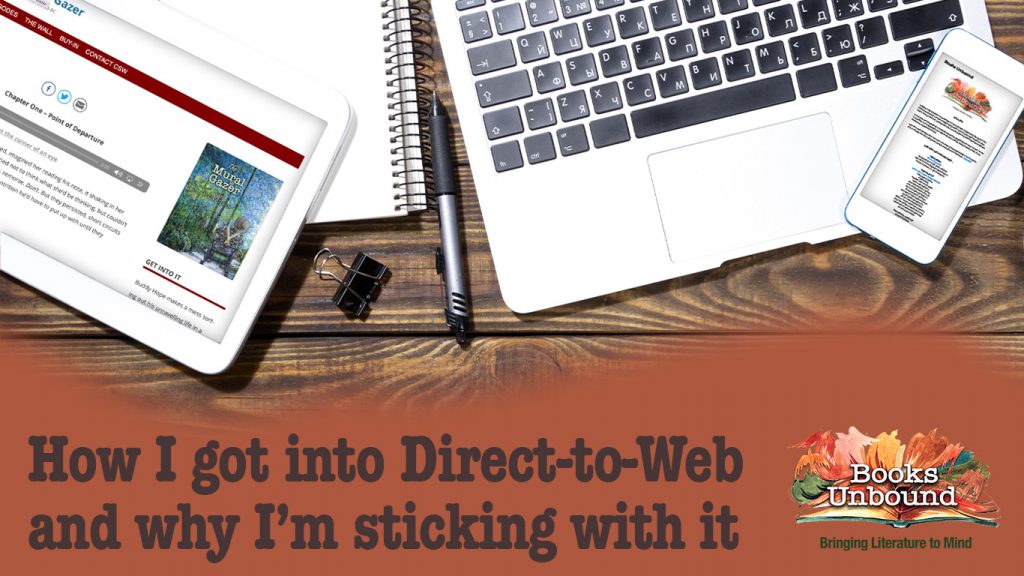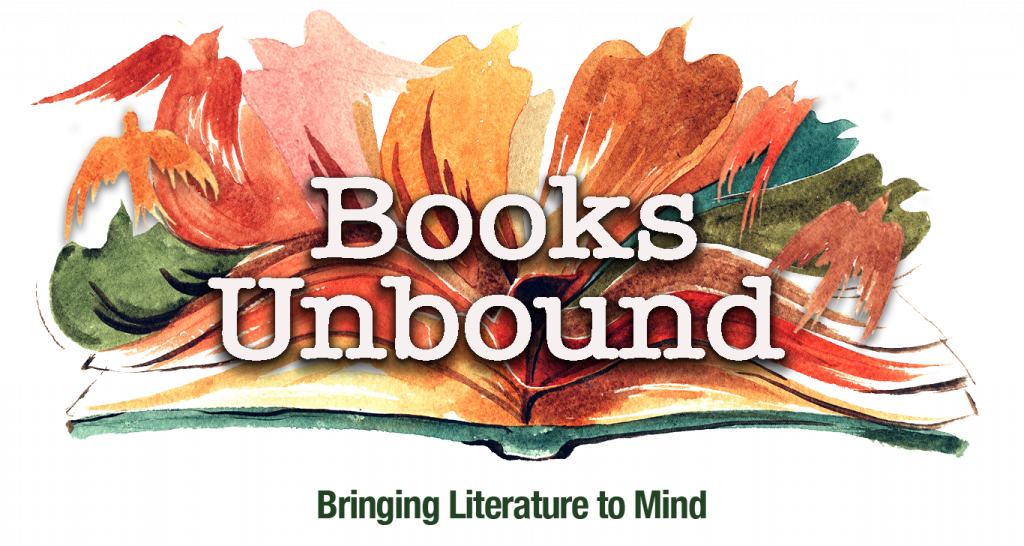
Nine years ago I began work on what would become my first direct-to-web novel, The Boy From Under, a crime thriller set in Langley, British Columbia. I have since taken the story offline, and will be republishing it after I complete work on my second D2W book, The Mural Gazer, which I plan to publish in a print edition this summer.
I launched myself into D2W because, like many writers, I was frustrated with the length of time it took to get my work published; with the trickledown process that left everyone up the chain earning money, while I had to pay off ‘reverse royalties’ before a penny would come my way; and by the challenges of getting my stories off bookstore shelves, into the hands of readers.
D2W as an adjunct to print editions seemed a promising concept, which might address those issues. I am still convinced of its potential, even though I have become increasingly aware of the daunting magnitude of the undertaking – not the technical difficulties, which are surmountable, but the steadfast loyalty of readers to books on printed pages, between covers.
That isn’t going to change any time soon, certainly not within my own lifetime. The iconic image of curling up with a book in a favourite armchair is not going to be supplanted by the notion of reading or listening to a novel on your mobile while jolting along on public transit between home and office. For the foreseeable future print will be the overwhelmingly popular choice of readers.
So why bother with direct-to-web at all? Why not let young up and comers crack open that niche market for a new generation of readers?
First and foremost, because literature is too important to a healthy, vital society not to secure its place in the online, digital world as soon as possible. I’ll have more to say about that in a future post, but getting books online has become an urgent priority for me because literature remains the most powerful mode I can think of for sharing ideas and feelings. It’s foundational to a society that explores its motives and challenges its actions.
Then there’s the creative possibilities D2W opens up. When I started down the direct-to-web path, I considered it purely from a publication and distribution point of view. Inevitably, however, it morphed into a mode of writing that excites me. The Mural Gazer was created dynamically. I know many authors will shudder at the thought, but I posted episodes as they were written – the online equivalent of an author writing his book in a department store window.
Over the years I have also come to appreciate the tremendous distribution and marketing opportunities of D2W. I can share The Mural Gazer with readers anywhere in the world as a text or audio book at almost no cost. Readers can access the book immediately when they see it promoted on social media. With a click they can open up the story on their mobile phones, laptops or desktop computers. After reading a few chapters, they can pay for the book online, too.
Finally (for now) there’s the matter of control, a decidedly two edged sword. I don’t really want to be a writer/publisher/promoter/bookseller because I value the knowhow of partners in the literary realm and would love to narrow my focus more on writing. For the time being, however, I have no choice. Until there are collaborative pathways from writing to publishing and selling, I will have to multitask as a D2W author.
A retired journalist and communications manager, I am in the tempting position of being able to take on that do-it-yourself book writing and publishing role. But I know it’s not a viable, sustainable model. What I envision are collectives, bringing the necessary skills together to see the dream of storytelling from conception through publication and sales in D2W and print formats made real.
That’s my goal for Books Unbound. I’m happy to share ownership.
